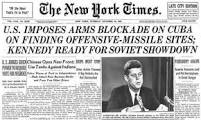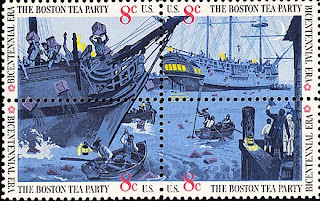Sixty years ago today, on Monday, October 22, 1962, I came home from school as usual. My mother had already left to go to work at her job in Macy’s downtown, leaving my younger sister and me at home with our grandmother. And, as she usually did on Mondays, my mother called us from work. But, unusually that Monday, she told me to be sure to watch the President’s speech later that evening on TV, to find out if we were going to go to war. That was my first alert to what was the opening salvo in what quickly came to be called « The Cuban Missile Crisis. » (Conventional reckoning dates the crisis as beginning on October 16 and ending on October 29. It was on October 16 that President Kennedy had learned of the presence of Soviet offensive missiles in Cuba. But the crisis became public only on October 22, when Kennedy addressed the nation and announced the American response to this aggressive Soviet action.)
The Cuban Missile Crisis was probably the closest the world has yet come to nuclear war. We were all scared. There’s a telling scene in the movie Thirteen Days (2000), when the Kevin O’Donnell character passes a church, sees a long line for confessions, and then gets on line himself. That captures how many of us felt and reacted at the time.
Recently, President Biden referenced that frightening experience in his October 6 « Armageddon » speech in New York, responding to Russian Tsar Vladimir Putin’s threats to employ « tactical » nuclear weapons in his war of aggression against Ukraine. The President referred twice in his comments to our collective memory of that dangerous episode in international relations, which evoked the realistic possibility of nuclear confrontation.
Putin is so utterly unpredictable and basically barbaric that the possibility of his breaking the historic (post-1945) nuclear taboo and resorting to nuclear weapons clearly cannot be ruled out. What would that mean? The fact is we really don’t know.
We don’t know, in part, because the taboo against using nuclear weapons and the underlying assumption that nuclear weapons are uniquely problematic is rooted in our Cold War experience, when what was envisioned was a total nuclear conflagration – « Mutually Assured Destruction. » For the most part, the possibility of limited employment of « tactical » nuclear weapons in a battlefield context has not been realistically entertained. How such a limited use of « tactical » nuclear weapons might play out and what responses might ensue remain unknown.
Back in the bad old days of the Cold War, when we worried for real about « Mutually Assured Destruction, » we used to have regular civil defense drills, which required us to run and hide if we were outdoors, and to hide under our desks if we were in school. The fear of nuclear war was real and palpable. And yet, at the same time, life went on. We went to school and planned for the future. People fell in love and got married. People bought cars and moved to the suburbs. As it was in the days of Noah, they were eating and drinking, marrying and giving in marriage [Matthew 24:37-38].
And so it is again now.





